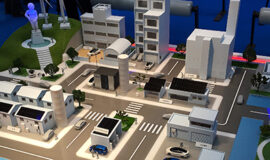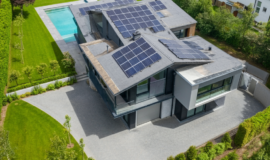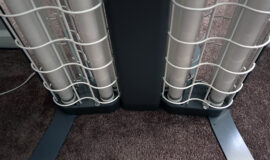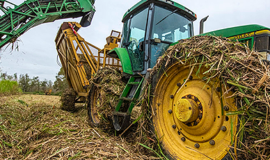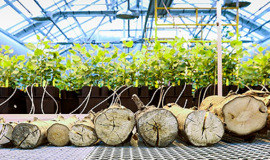Bifacial Modules – Benefits and Limitations
With the greater need of implementing renewable energy developers had greater motivation for new solutions. One of the solutions which has gain popularity recently is the implementation of bifacial PV modules.
Unlike the usual mono-facial solar panels, bifacial panels are consisted of solar cells on each side of the panel, which allows them to take in sunlight from two sides at once thus increasing energy production. The bifacial modules are produced with a transparent glass on both sides instead of a back sheet on one side and an encapsulant is used on both sides of the solar panels. These types of panels are usually made from monocrystalline cells, but polycrystalline can also be used.
The benefits of bifacial modules to a certain extend surpass the ones of traditional solar panels. Some of the benefits of these types of panels include:
– More Energy Production and Less Panels Required
If the space intended for a solar plant is limited to your needs, sometimes bifacial panels can help you achieve a higher value of solar energy of the one that would be possible with mono-facial panels. The bifacial panels can absorb both direct sunlight and the reflected sunlight, thus making them 11-12 % more efficient than traditional solar panels.
– Energy Generation in Bad Weather Conditions
When using mono-facial panels, the produced energy is very much dependent on the weather conditions. However, the same doesn’t go for bifacial panels. During bad weather conditions only the front side is affected by them while the other side functions fine.
– Higher Durability
Another advantage of bifacial solar panels is their durability. In comparison to the mono-facial panels, bifacial ones are more durable and provide better protection from hail and any other bad weather conditions. They are protected by the tempered glass from both sides.
– Ideal for Ground Mounted Solar Plants
To maximize energy production from reflected sunlight, it is best to space out the bifacial panels. That results with more light between and around them. When placing solar panels on the ground, you can usually space them out enough to maximize production from reflected sunlight.
– More Reliable than PV Systems with Trackers
PV systems with trackers use trackers to follow the position of the sun during the day thus producing more energy than static PV systems. But the issue with tracking systems is that they cost a bit more and the moving parts might break down and/or need additional maintenance.
When using bifacial panels, you can get higher production and no moving parts.
Like every technology, the bifacial solar panels have some limitations:
– Limited Usage on a Roof
If you have a tilted roof sometimes there is no need of additional construction to lift up the solar panels, so they are installed parallel to the roof. Bifacial panels won’t do much good in this case. However, if you have a flat or nearly flat roof, you can use bifacial panels given that you have enough roof space.
– Bifacial Panels Function Best with a Reflective Surface Beneath
When you install these panels make sure you have a more reflective surface underneath (sandy, white or silver surface). If you have dirt, grass or bark dusk beneath your bifacial solar power plant, it will produce significantly less than with a reflective surface.

